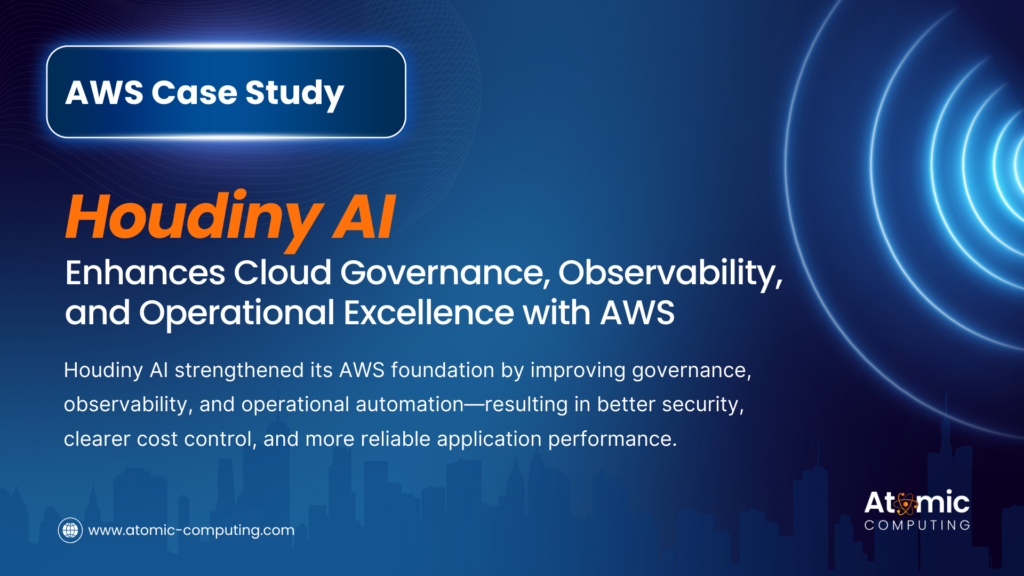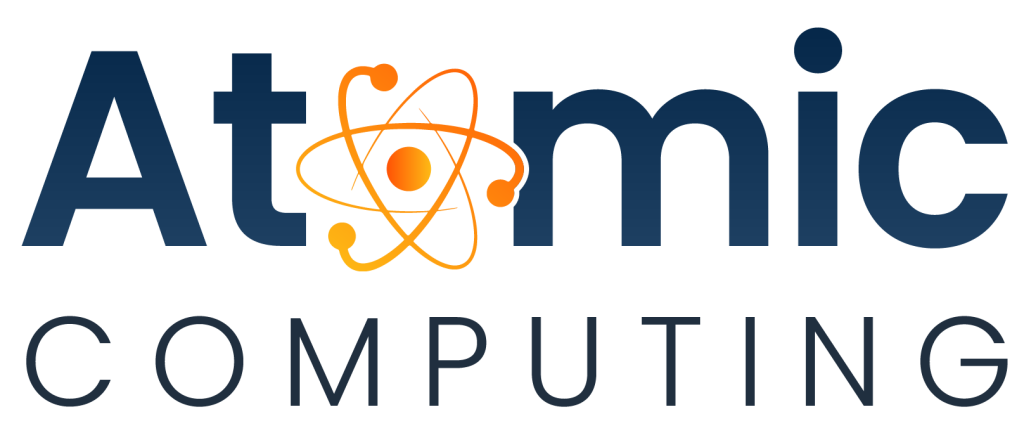AWS Case Study: Houdiny AI Enhances Cloud Governance, Observability, and Operational Excellence with AWS

AWS Cloud Operations Competency Case Study
Client: Houdiny AI
ACE Opportunity ID: O6822128
Domain: AWS Cloud Operations
Pattern: Governance, Compliance, Observability, and Operations with AWS CloudOps across Multi-Account Setup
1. Customer Background
Houdiny AI is an AI-powered outreach assistant platform that helps businesses generate personalized emails and LinkedIn messages, and analyze leads through engagement scoring. To scale efficiently, Houdiny AI needed not only a reliable AI backend but also enterprise-grade governance, monitoring, compliance, and financial management practices to support their SaaS growth.
2. Challenges
Houdiny AI faced challenges across multiple CloudOps domains:
- Governance & Compliance: Needed to ensure multi-account governance for staging and production environments, with guardrails to prevent misconfigurations.
- Financial Management: Required granular visibility into cost allocation across environments and services.
- Monitoring & Observability: Needed proactive observability for serverless and container workloads (Lambda, Batch, RDS).
- Compliance & Auditing: Required log centralization and continuous auditing to meet customer security expectations.
- Operations Management: Sought automation for patching, release workflows, and centralized change management.
3. Solution Aligned against Cloud Operations Pillars
1. Cloud Governance Controls
- Implemented AWS Control Tower with a multi-account strategy (Houdiny-Staging and Houdiny-Prod accounts).
- Enabled preventive and detective guardrails:
- Preventive: Custom SCPs to protect CloudTrail logs from deletion.
- Detective: Guardrails for RDS public access, EC2 public SSH, and ASG public IP checks.
- IAM Identity Center (SSO) used for centralized user identity management and least-privilege access.
2. Financial Management Practices
- AWS Budgets and Cost Anomaly Detection configured to monitor unexpected spend.
- Resource tagging and cost categories used to split costs between staging and production.
- Weekly billing alerts sent to Slack via Lambda + EventBridge automation, improving financial transparency.
3. Monitoring & Observability Solutions
- Amazon CloudWatch Logs & Metrics: Used for EC2, RDS, Lambda, and Batch processing.
- CloudWatch Logs Insights: Provides detailed log analysis for containerized workloads in AWS Batch.
- VPC Flow Logs: Captures and analyzes network traffic for troubleshooting and security analysis.
- EventBridge Integration: Automates job status tracking for AI batch processes, ensuring real-time observability for application workflows.
4. Compliance & Auditing Capabilities
- AWS Config & CloudTrail enabled via Control Tower across all accounts.
- Logs aggregated in a centralized, encrypted S3 bucket with versioning and lifecycle rules.
- Continuous compliance monitoring against AWS Config rules (e.g., restricted-ssh, rds-instance-public-access-check).
- Compliance data retained for audit readiness, ensuring traceability.
5. Operations Management Processes
- Infrastructure as Code (Terraform) used to deploy networking, EC2, SES, and Batch resources.
- Patching: Amazon Linux golden AMIs maintained via AWS Systems Manager Patch Manager.
- Change Management: Trello tickets mapped to provisioning and decommissioning of resources, with approvals for critical changes.
4. Quantitative Business Impact
| Metric | Before Implementation | After Implementation |
| Governance Violations | Manual detection, ad-hoc | Automated guardrails and Config rules reduced violations by 80% |
| Cost Visibility | Limited | Tagged resources, budgets, and Slack alerts provided near real-time visibility |
| Deployment Reliability | Manual EC2-based releases | Automated GitHub Actions pipeline improved release success rate by 90% |
| Incident Response Time | 2–3 hours (manual triage) | <15 minutes with CloudWatch alarms + automated notifications |
| Compliance Audit Readiness | Reactive preparation | Continuous monitoring ensured audit-ready status year-round |
5. Outcome
Through AWS Cloud Operations best practices, Houdiny AI achieved:
- Improved Governance: Centralized OU-level governance with Control Tower.
- Financial Discipline: Accurate cost allocation and real-time budget tracking.
- Enhanced Observability: Proactive detection of application anomalies with CloudWatch + EventBridge.
- Audit-Ready Compliance: Continuous auditing with Config and CloudTrail.
- Operational Excellence: Automated patching, releases, and change management processes reduced downtime and increased velocity.
6. AWS Services Used
- Governance: AWS Control Tower, AWS Organizations, IAM Identity Center
- Financial Management: AWS Budgets, Cost Anomaly Detection, Lambda, EventBridge
- Monitoring/Observability: Amazon CloudWatch (Logs, Metrics, Logs Insights), VPC Flow Logs, EventBridge
- Compliance/Auditing: AWS Config, AWS CloudTrail, Amazon S3 (centralized log storage)
- Operations Management: Terraform, AWS Systems Manager Patch Manager, GitHub Actions, Trello
